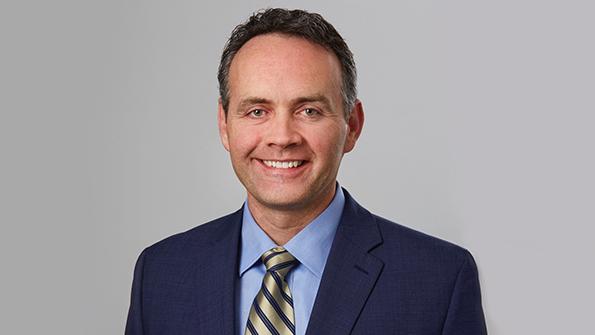
Collins Aerospace President Stephen Timm was interviewed onstage by AW&ST Editor-In-Chief Joe Anselmo during Aviation Week’s recent Defense Chain Conference in Tysons Corner, Virginia. Highlights follow.
The aerospace industry seems to be entering a new golden age. What are the areas that excite you where Collins will play? There are six strategic areas that we are investing in. First is connected battlespace: open, secure systems in a highly changing threat environment to make sure communications can be effective between airborne, space, land and sea [domains]. Second is autonomy: providing a more enabled aircraft for more complex missions. Third is advanced structures [for applications such as] hypersonics and [enabling] lower carbon emissions by reducing weight. Number four is integrated systems: complex integrations to more simple examples such as embedding sensors in structures to save size, weight and power. Fifth is the connected aviation ecosystem: If we can digitize the five million systems that we have on military and commercial aircraft, you can improve operations in the airspace and reduce maintenance costs by understanding those systems more predictably. Sixth is electrification.
We probably are the market leader in power generation and power distribution for all aircraft types. It’s not only removing pneumatic and hydraulic capabilities in favor of lower weight and size-—it’s also new solutions like hybrid-electric. We’re investing in a 1-megawatt motor that will have the most power density and efficiency of any in the industry, with applications from advanced air mobility to commercial aviation.
A lot of people thought the COVID-19 crisis would set back sustainability in aviation. It seems the opposite has happened. Commercial aviation uses about 95 billion gal. of fuel per year and is a 2.9% contributor to greenhouse gas emissions. If we don’t do more, it’s going to grow by some estimates to above 30%. So we’re accelerating our efforts here. Collins, along with [sister company] Pratt & Whitney and [parent company] Raytheon Technologies, has signed up to support the industry to get to net zero by 2050. We are investing differently, and in fact all six strategic investment areas that I just mentioned contribute to sustainability.
Much of the investment Collins makes in commercial aviation is being leveraged for military platforms. Give us some examples. Our Pro Line Fusion integrated avionics system, which originally was designed for business jets, can now be found on a number of military platforms. The cockpit displays that we provide on the KC-46 tanker are essentially the same as we provide to Boeing on the 787, and now we’re bringing head-up display technology and enhanced vision systems—originally developed for business jets—into military platforms like the C-130 to help see through low-visibility conditions. We do the investment for these technologies up front, assume the initial development risk and solve obsolescence challenges. That together saves the Pentagon millions of dollars.
The old Rockwell Collins acted as a middleman between Silicon Valley and the Pentagon. The fast-moving tech companies didn’t want to do business with the slow-moving U.S. government. Is Collins Aerospace still a middleman? I think it is. Collins can be a good example of how to work with the Defense Department without constricting and inhibiting commercial interest in playing because it’s just too hard. We’ve watched it inhibit commercial next-generation technologies from coming into the department. We can’t afford that. We need things like 5G and next-generation cybersecurity to be part of the solution for our warfighters. I think Collins is in a good place to be a representative to help these commercial companies bridge into doing business [with the government]. It’s not mutually exclusive, where it’s either commercial or military. I think there are ways to blend the technology, bring it to the warfighter and give them proven solutions at a competitive cost. But I think it needs to go faster, to be very blunt.
Are you having to devote more resources to cybersecurity? We work extremely hard and have for a long time to ensure that our products and services are secure. We invest very heavily to be at and above the standard. But cybersecurity is a fascinating, changing landscape. And it can be a leapfrog—if you’re not careful, you’ll be at the wrong place when the leap occurs. So we invest hard with technology, standards involvement and [skill-set] development to ensure that we’re staying ahead of that rapidly changing threat environment.





